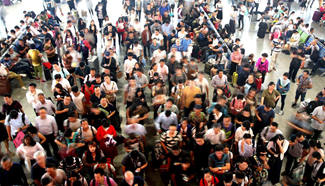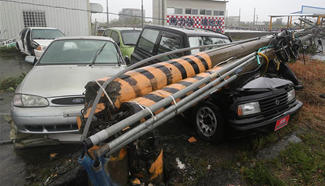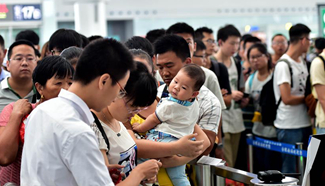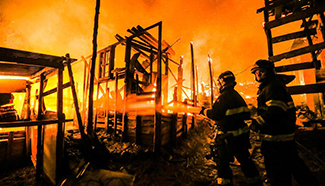
Photo taken on Sept. 14, 2016 shows the press conference about the Tiangong-2 space lab in Jiuquan, northwest China's Gansu Province. China will launch the Tiangong-2 space lab from the Jiuquan Satellite Launch Center in northwestern China's Gobi Desert at 10:04 p.m. on Sept. 15. (Xinhua/Ju Zhenhua)
JIUQUAN, Sept. 14 (Xinhua) -- China's first space lab Tiangong-1 is expected to fall into the Earth's atmosphere in the latter half of 2017, after about six years in space, a senior official with the country's manned space program said Wednesday.
Tiangong-1 was launched in September 2011 and ended its data service in March this year, when it had "comprehensively fulfilled its historical mission," said Wu Ping, deputy director of the manned space engineering office, at a press conference here.
The space lab is currently intact and orbiting at an average height of 370 kilometers, Wu said.
It was in service for four and a half years, two and a half years longer than its designed life, and had docked with Shenzhou-8, Shenzhou-9 and Shenzhou-10 spacecraft and undertaken a series of tasks, making important contributions to China's manned space cause, Wu said.
"Based on our calculation and analysis, most parts of the space lab will burn up during falling," she said, adding that it was unlikely to affect aviation activities or cause damage to the ground.
China has always highly valued the management of space debris, conducting research and tests on space debris mitigation and cleaning, Wu said.
Now, China will continue to monitor Tiangong-1 and strengthen early warning for possible collision with objects. If necessary, China will release a forecast of its falling and report it internationally, said Wu.
The official said China will launch its Tiangong-2 space lab at 10:04 p.m. Thursday.











